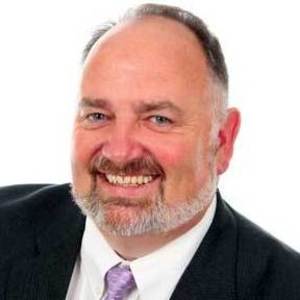What's in a Name?

November 11, 2016
BY Ron Lamberty
You’ve seen the commercials. ExxonMobil introduced it with a huge summer Olympic ad buy, and it’s been all over the place since. A guy pumps gas and reads a sign saying ExxonMobil gas has seven ingredients for better mileage, and wonders aloud what they are. Suddenly, seven scientisty-looking people appear, offering vague (but technical sounding) answers to his question. I remember “detergent additive number one” and “detergent additive number two,” and a guy in an egg-shaped hovercraft (with jets facing the wrong direction) talking about “marker molecules,” I think. Not sure how any of those help mileage, but you’ve seen the ad, right? So, what’s the brand being introduced?
If you can’t remember the ExxonMobil brand, how about one that’s been around longer? Can you name Shell’s premium brand? No? How about the branded additive Chevron introduced 20 years ago? You know that one, don’t you?
Of course you don’t, unless you’re a fuel nerd of some sort, and maybe not even then. After all, you’re reading this column in a magazine for people in the ethanol industry. You ARE a fuel nerd of some sort. If you don’t know those brand names, who does?
Hardly anyone. And even those who do, don’t seem to do much with the information. Two-thirds of consumers say price is the most important factor when they buy gas, and 25 percent buy based on location or ease of getting in and out of the retailer’s parking lot. About 8 percent of drivers say brand is the most important thing to them. And by brand, they mean the brand name on the big sign in front of the station, not the name of the fuel or an additive.
So, you won’t be surprised to know, I cringe a little when I hear ethanol people talking about the need for an ethanol “brand name.” It would be great if a logo or catchy name drew more people to higher ethanol blends, but nothing I’ve seen gives me confidence that would happen. I’m not sure it matters what WE call our fuel. At the same time, as higher ethanol blends are introduced into more markets, retailers experience varying degrees of success, especially with E15. We should take note of successful E15 marketers. It does matter what they call our fuel.
At this summer’s American Coalition for Ethanol conference, Mike Lorenz of Sheetz said “Customers don’t know what E15 is, because they don’t know what E10 is.” I thought he was describing a regional issue, particular to North Carolina, until I helped out with grand re-openings of c-stores in Iowa, South Dakota and Nebraska, where E15 was being introduced to customers. After talking with drivers and station employees, it became clear E10 and E15 are our terms, not theirs. Stations sell regular or unleaded, not E10. Customers don’t know they can use E15, because they don’t use E10. They use regular or unleaded. The only fuel drivers are familiar with that starts with an “E” is E85, so most assume E15 is a flex fuel.
To date, most retailers reporting success selling E15, offer it as “Unleaded15” or “Unleaded Plus.” They make information on new blends available, but “unleaded” and a lower price seem to be all most drivers need to know. Ironically, the way to sell more ethanol as E15 seems to be reminding motorists less about ethanol and more about the gas they’ve always used.
That’s disappointing, but remember, after spending hundreds of millions promoting brands like Synergy, V-Power, and Techron, pumps at major branded locations still say “unleaded” and “regular,” too.
Author: Ron Lamberty
Senior Vice President
American Coalition for Ethanol
605-334-3381
rlamberty@ethanol.org
Advertisement
Advertisement
Related Stories
President Trump on July 4 signed the “One Big Beautiful Bill Act.” The legislation extends and updates the 45Z credit and revives a tax credit benefiting small biodiesel producers but repeals several other bioenergy-related tax incentives.
CARB on June 27 announced amendments to the state’s LCFS regulations will take effect beginning on July 1. The amended regulations were approved by the agency in November 2024, but implementation was delayed due to regulatory clarity issues.
SAF Magazine and the Commercial Aviation Alternative Fuels Initiative announced the preliminary agenda for the North American SAF Conference and Expo, being held Sept. 22-24 at the Minneapolis Convention Center in Minneapolis, Minnesota.
International Sustainability & Carbon Certification has announced that Environment and Climate Change Canada has approved ISCC as a certification scheme in line with its sustainability criteria under its Clean Fuel Regulations.
Legislation introduced in the California Senate on June 23 aims to cap the price of Low Carbon Fuel Standard credits as part of a larger effort to overhaul the state’s fuel regulations and mitigate rising gas prices.
Upcoming Events









